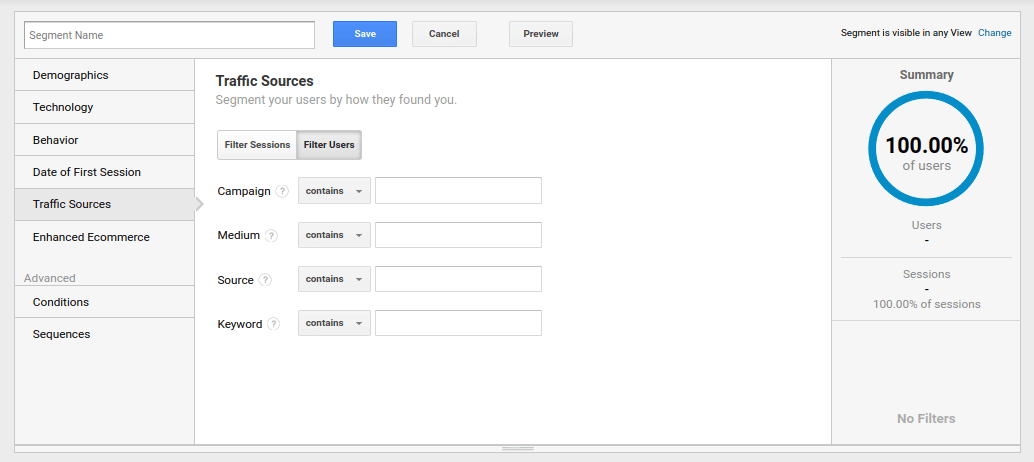Remarketing in Google Analytics: Transforming Site Visitor Information Into Sales
Remarketing in Google Analytics offers a critical method that holds the power to convert site visitor information into substantial sales end results. By harnessing the capabilities of this sophisticated tool, services can unlock a trove of insights that lead the method for enhanced customer engagement and revenue generation. The ability to specifically target audiences based on their habits and preferences opens up doors to a world of possibilities, driving businesses in the direction of lasting development and productivity. With a thorough analysis of visitor activities and a tailored remarketing approach, organizations can navigate the digital landscape with accuracy and skill, untangling the true possibility of their online visibility.

Benefits of Remarketing in Google Analytics
Remarketing in Google Analytics offers services the chance to reconnect with web site site visitors who have actually revealed passion in their solutions or products, therefore increasing brand presence and conversions. By leveraging this powerful device, organizations can stay top-of-mind with potential consumers who have actually currently involved with their internet site. Among the crucial advantages of remarketing is the capability to target specific audiences based upon their habits on the website, permitting for personalized messaging and customized ad campaign.
In addition, remarketing in Google Analytics can assist companies raise their conversion rates by re-engaging with site visitors who might not have actually purchased or completed a wanted activity on the website during their initial visit. This targeted approach can bring about higher conversion rates and eventually drive more sales. Additionally, remarketing can likewise aid organizations build brand name commitment and trust by maintaining consistent interaction with possible consumers throughout their buying journey.
Setting up Remarketing Campaigns
When initiating remarketing projects in Google Analytics, organizations need to carefully intend and implement tactical targeting techniques to properly reach their desired audience. The primary step in setting up remarketing projects is to specify clear purposes. Whether the objective is to raise web site conversions, advertise certain items, or elevate brand recognition, having a distinct purpose will certainly guide the whole project strategy.
Following, businesses require to develop audience lists based on details requirements such as site site visitors, customers that deserted their buying carts, or those who engaged with certain material. These checklists enable targeted messaging tailored to every sector of the target market, enhancing the possibilities of conversion.

Finally, businesses ought to establish conversion tracking to measure the success of their remarketing campaigns properly. By examining the performance data, services can enhance their projects for much better results and higher ROI.
Leveraging Audience Division for Remarketing
Utilizing audience division is a vital strategy for boosting the performance of remarketing projects in Google Analytics (What Is “Remarketing” In Google Analytics?). By splitting your site site visitors right into distinctive groups based upon their behavior, demographics, or rate of interests, you can tailor your remarketing efforts to target these certain segments with pertinent advertisements. Target market segmentation permits you Related Site to develop more personalized and targeted campaigns, raising the chances of re-engaging visitors and driving conversions
Segmenting your audience enables you to provide personalized messaging that resonates with each group's needs and preferences. You can create different remarketing checklists for customers who deserted their shopping carts, visited details product web pages, or downloaded a certain source. By understanding the various inspirations and passions of these segments, you can craft engaging advertisement creatives that are a lot more most likely to record their attention and trigger them to revisit your site.
Moreover, target market division additionally helps you optimize your advertisement spend by focusing on high-value segments that are most likely to transform - What Is “Remarketing” In Google Analytics?. By examining the performance of each section, you can allocate your spending plan much more successfully and make the most of the return on your remarketing investment
Studying Remarketing Efficiency Metrics
Metrics such as click-through rate (CTR), conversion price, expense per acquisition (CERTIFIED PUBLIC ACCOUNTANT), and return on ad spend (ROAS) offer beneficial understandings into the efficiency of your remarketing efforts. CPA helps determine the expense of getting a client via your remarketing campaign, while ROAS assesses the income generated for each dollar spent on marketing. By evaluating these metrics, you can identify locations for improvement, optimize your projects, and designate budget a lot more effectively to optimize the ROI of your remarketing strategies in Google Analytics.

Ideal Practices for Remarketing Success
Structure on the structure of examining remarketing efficiency metrics, implementing ideal techniques is key to attaining success in your remarketing endeavors. Additionally, guarantee that your remarketing advertisements are aesthetically attractive and have engaging phone calls to activity.
In addition, frequency covering is important to prevent ad exhaustion. Pounding customers with the same advertisement continuously can result in nuisance and decreased performance. Checking various advertisement styles, positionings, and messages is also crucial. A/B screening permits you to identify which approaches generate the ideal outcomes and enhance your projects appropriately. Monitor your projects on a regular basis, assess the information, and make data-driven decisions to constantly fine-tune your remarketing efforts for optimal influence.
Conclusion
In conclusion, remarketing in Google Analytics uses businesses the opportunity to utilize visitor data to boost sales and drive conversions. By utilizing target market division, assessing performance metrics, and executing ideal techniques, organizations can customize their remarketing efforts to target high-value sections efficiently. With compelling ad creatives and conversion tracking, services can construct brand name loyalty and count on, eventually making the most of the impact of their marketing techniques.
With a thorough analysis of visitor actions and a tailored remarketing method, companies can browse the digital landscape with accuracy and finesse, unwinding the official site true potential of their on-line existence.
One of the key benefits of remarketing is the ability to target click here to find out more certain target markets based on their actions on the web site, permitting for customized messaging and tailored marketing projects.
Furthermore, remarketing can also aid organizations construct brand name commitment and trust by preserving regular communication with possible customers throughout their acquiring journey.
Metrics such as click-through rate (CTR), conversion rate, price per purchase (CPA), and return on advertisement spend (ROAS) supply beneficial insights right into the performance of your remarketing efforts. By analyzing these metrics, you can identify locations for enhancement, maximize your campaigns, and designate budget more efficiently to take full advantage of the ROI of your remarketing approaches in Google Analytics.